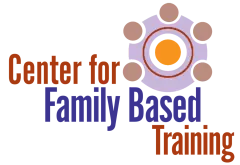The primary objective of this course is to define and describe the nature of a therapeutic alliance in family therapy and explain why it is critical to successful outcomes. Friedlander, Escudero, and Heatherington’s empirically-based SOFTA model for understanding and assessing the strength of the therapeutic alliance is described as it relates to intensive, in-home services. This model includes four relationship dimensions, which include a sense of safety, an emotional connection or emotional bond, a sense of being contributing partners, and a sense of shared purpose. This course describes how to use individual subsystem work with caregivers and youth to develop balanced therapeutic alliances with all family members.
This is an introductory level course. The target audience is all behavioral health professionals working with children and adolescents.
Objectives:
As a result of participating in this training, participants will be able to:
- Describe four dimensions of the therapeutic alliance and how to recognize them when they are present.
- Describe how to use individual subsystem sessions to develop therapeutic alliances with caregivers and adolescents.
- Describe basic principles for cultivating a therapeutic alliance
This course uses an online distance-learning self-paced format. It includes recorded audio, recorded video-based webinars, and selected readings. There are post-tests to ensure comprehension of the material. Participants can communicate with the instructors via the online moodle interface. Real-time communication with the instructor in our online, self-paced distance learning courses is not possible. However, participants can send an email to the instructor via the online moodle interface within the course and expect to receive a response within 48 hours. All course content, including post-tests, should take approximately 2 hours to complete.
Frequently Asked Questions
Visit our Self-Paced, Online Continuing Education Policies & FAQs for additional information regarding the CFBT online learning center, accommodations for disabilities, reporting problems with the course, instructions for viewing webinars, etc.
The experience of emotional safety is a key component of a therapeutic alliance in family therapy, particularly when working with family members who have trauma histories, like those typically treated in intensive, in-home programs. It all begins with active listening, which helps family members feel heard. In addition to feeling heard, family members must feel calm and regulated in the presence of one another and with the therapists. Families in conflict often feel a sense of emotional danger in family treatment, not only from the therapist but also from one another. This course describes five therapist-led actions that decrease anxiety and discomfort and lead to a sense of safety. These actions, which are described in some detail, include: 1) creating a predictable structure for each session, 2) attuning to family member distress and acting as a co-regulator as needed, 3) humanizing family members, 4) maintaining a strength-focus, and 5) interrupting judgment, blame, and hostility.
This is an introductory level course. The target audience is all behavioral health professionals working with children and adolescents.
Objectives:
As a result of participating in this training, participants will be able to:
- Identify four fundamental active listening skills
- Describe two actions involving boundary setting that creates emotional safety in family sessions
- Describe three relational actions that create emotional safety in sessions.
This course uses an online distance-learning self-paced format. It includes recorded audio, recorded video-based webinars, and selected readings. There are post-tests to ensure comprehension of the material. Participants can communicate with the instructors via the online moodle interface. Real-time communication with the instructor in our online, self-paced distance learning courses is not possible. However, participants can send an email to the instructor via the online moodle interface within the course and expect to receive a response within 48 hours. All course content, including post-tests, should take approximately two hours to complete.
Frequently Asked Questions
Visit our Self-Paced, Online Continuing Education Policies & FAQs for additional information regarding the CFBT online learning center, accommodations for disabilities, reporting problems with the course, instructions for viewing webinars, etc.
The first stage of treatment in ESFT is Creating the Therapeutic System. It is all about establishing working relationships with family members and, as needed, extended family members and other professionals in the community. This course describes in detail the four clinical tasks comprising this treatment stage. These tasks include: 1) orienting families to ESFT and explaining how it works, 2) using the ecomap to identify important people to include in treatment, 3) cultivating the therapeutic alliance, and 4) gaining buy-in and engaging family members in treatment. Successful completion of these four treatment tasks requires therapists to adopt a relational, collaborative approach to working with families. This course demonstrates how to employ “partnership talk” with families to create a collaborative treatment context and to solidify working relationships within the therapeutic system.
This is a Beginning Level course. The target audience is all behavioral health professionals working with children and adolescents.
Learning Objectives
- Use ecomaps and an ESFT orienting script to begin the process of building a therapeutic system
- Describe the relationship between a therapeutic alliance and treatment engagement
- Identify the characteristics of a collaborative, relational interviewing approach with families
This course uses an online distance-learning self-paced format. It includes recorded audio, recorded video-based webinars, and selected readings. There are post-tests to ensure comprehension of the material. Participants can communicate with the instructors via the online moodle interface. Real-time communication with the instructor in our online, self-paced distance learning courses is not possible. However, participants can send an email to the instructor via the online moodle interface within the course and expect to receive a response within 48 hours. All course content, including post-tests, should take approximately 2 hours to complete.
Frequently Asked Questions
Visit our Self-Paced, Online Continuing Education Policies & FAQs for additional information regarding the CFBT online learning center, accommodations for disabilities, reporting problems with the course, instructions for viewing webinars, etc.

